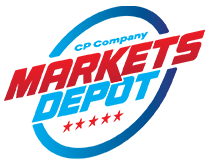Key Takeaway:
A smart restaurant equipment budget balances functionality, durability, and long-term ROI. Prioritize high-impact investments, avoid hidden costs, and align purchases with your kitchen layout and menu.
Why Budget Planning Matters More Than You Think
Restaurant buildouts are expensive—and equipment is often the single largest upfront cost after real estate. Without a well-planned budget, you risk:
-
Overspending on gear you don’t need
-
Underspending on tools that affect service quality
-
Running out of cash before opening day
-
Buying low-grade supplies that fail under pressure
Whether you’re opening a new concept or upgrading an existing kitchen, proper planning helps you control costs without compromising performance.
Step 1: Set Your Total Budget Based on Concept
Use your restaurant type and service model to set realistic equipment expectations. A full-service restaurant needs more equipment than a café or ghost kitchen.
Typical equipment budgets by concept:
-
Fast casual / café: $40,000–$80,000
-
Full-service restaurant: $100,000–$300,000+
-
Ghost kitchen or food truck: $20,000–$50,000
These ranges vary based on square footage, menu complexity, and whether you buy new or refurbished gear.
Step 2: Prioritize Mission-Critical Equipment
Start your list with items that directly power your kitchen operations:
Must-haves:
-
Commercial range and oven
-
Fryer (if applicable)
-
Refrigeration (reach-in, undercounter, prep tables)
-
Food prep tables and cutting boards
-
Dishwashing station
-
Storage shelving
Add optional equipment only after these are accounted for.
MarketsDepotUSA.com offers curated equipment packages for common restaurant formats to help streamline this process.
Step 3: Allocate Budget by Category
A simple percentage breakdown can help you balance spending:
-
Cooking Equipment: 35–40%
-
Refrigeration: 20–25%
-
Food Prep & Smallwares: 10–15%
-
Dishwashing & Cleaning: 10%
-
Storage & Shelving: 5–10%
-
Service Supplies & Tableware: 5–10%
This approach ensures you don’t overspend in one area while shortchanging another.
Step 4: Choose Quality Where It Counts
Cutting corners on essential equipment often leads to long-term losses. Invest in quality for:
-
Cooking appliances used daily
-
Refrigeration that affects food safety
-
Prep tools that impact labor efficiency
Opt for value-tier solutions in lower-risk categories like trays, racks, or condiment organizers.
Step 5: Watch for Hidden Costs
Your equipment budget isn’t just the sticker price. Be sure to include:
-
Shipping and freight delivery
-
Installation and utility hookups
-
Permits and inspections
-
Backup parts or accessories
-
Warranty upgrades
MarketsDepotUSA.com includes shipping details and warranty info upfront, so you know your total cost before checkout.
Step 6: Consider Used or Refurbished Items—Selectively
Used equipment can save money, but it comes with risk. Only consider used or refurbished gear for:
-
Non-electrical items (like shelving or prep tables)
-
Well-maintained refrigeration with a warranty
-
Light-use appliances that have been inspected
Avoid used items for high-wear equipment like fryers, dishwashers, or anything without service records.
Step 7: Take Advantage of Bulk and Starter Kits
Many suppliers offer bundled pricing for new restaurants. Look for:
-
Smallwares kits
-
Food storage sets
-
Cooking bundles
-
Opening specials with built-in discounts
These save time, reduce stress, and often include items you’d otherwise forget.
MarketsDepotUSA offers kits tailored by kitchen size and cuisine type.
Step 8: Plan for Expansion Now
Even if you’re launching small, plan your budget to allow for:
-
Modular equipment (stackable ovens, scalable shelving)
-
Extra prep space
-
Growth in storage and refrigeration needs
Buying flexible equipment now avoids total replacement later.
Final Thoughts: Plan Once, Spend Smarter
An organized equipment budget is a powerful tool—it prevents overspending, supports profitability, and reduces project delays.
Need help building a tailored restaurant equipment plan?
Visit MarketsDepotUSA.com for expert-vetted equipment bundles, budget-friendly options, and planning resources designed for restaurant operators.
